#Human impact on aquatic ecosystems
Explore tagged Tumblr posts
Text
The Vanishing Waters: Unveiling the Alarming Rate of Degradation in Our World's Water-Related Ecosystems

Our planet's water-related ecosystems are the lifeblood of biodiversity and play a crucial role in sustaining life on Earth. These diverse habitats, ranging from serene lakes and flowing rivers to vibrant coral reefs and teeming wetlands, provide essential services that are essential for human survival and the well-being of countless species. However, a looming crisis threatens the very existence of these vital ecosystems. The world's water-related ecosystems are being degraded at an alarming rate, putting our environment, wildlife, and even our own future at risk. In this article, we will delve into the causes, consequences, and potential solutions to combat this pressing issue and ensure the survival of these precious ecosystems.
The Magnitude of the Crisis
The degradation of water-related ecosystems is a global challenge that requires immediate attention. Around the world, these habitats are facing a range of threats, including pollution, habitat destruction, overfishing, climate change, and invasive species. These factors, often interconnected, are wreaking havoc on the delicate balance within these ecosystems.
Pollution: A Slow Poison
One of the leading culprits behind the deterioration of water-related ecosystems is pollution. Industrial waste, agricultural runoff, and untreated sewage find their way into our waters, contaminating them with harmful chemicals and plastics. These pollutants not only harm aquatic life but also have far-reaching consequences for humans who rely on these water sources for drinking and agriculture.
Habitat Destruction: Losing Our Natural Havens
The relentless expansion of human activities, including deforestation and urbanization, is rapidly encroaching upon the habitats of various aquatic species. Wetlands are drained, mangroves are cleared, and rivers are diverted, disrupting the natural flow and interconnectedness of these ecosystems. As a result, countless species lose their homes and face the threat of extinction.
Overfishing: Depleting the Ocean's Bounty
Overfishing is pushing marine ecosystems to the brink of collapse. Unregulated and unsustainable fishing practices, coupled with the demand for seafood, are causing a decline in fish populations, disrupting food chains, and jeopardizing the livelihoods of coastal communities that depend on fishing for survival.
Climate Change: The Silent Menace
Perhaps the most insidious threat to water-related ecosystems is climate change. Rising global temperatures lead to the melting of polar ice caps, causing sea levels to rise and intensifying storms and floods. These changes have devastating effects on coastal areas, submerging critical habitats, and causing the loss of biodiversity.
Consequences of Ecosystem Degradation
The degradation of water-related ecosystems has severe consequences for both the environment and human societies. As these ecosystems collapse, they disrupt the services they provide, such as water purification, flood control, and carbon sequestration, impacting human health and economies worldwide.
Biodiversity Loss: A Precarious Chain Reaction
Water-related ecosystems are home to a vast array of species, many of which are uniquely adapted to these environments. As these habitats deteriorate, many species face extinction, triggering a chain reaction that affects the entire ecosystem. The loss of one species can have cascading effects on others, disrupting the delicate web of life.
Threats to Food Security
Fisheries, both marine and freshwater, play a significant role in providing sustenance to billions of people around the globe. The depletion of fish populations due to overfishing and habitat destruction threatens the food security and livelihoods of millions, particularly in developing countries that heavily rely on fish as a primary protein source.
The Impact on Human Health
The quality of our water is directly linked to our health. Polluted water can cause waterborne diseases, affecting millions of people each year. Additionally, the loss of water-related ecosystems reduces the availability of clean water for drinking and sanitation, exacerbating the global water crisis.
Rising Economic Costs
The degradation of water-related ecosystems comes with a hefty price tag. Loss of fisheries, increased frequency of floods, and the decline of coastal protection services result in billions of dollars in economic losses each year. The expenses related to ecosystem restoration and mitigation efforts add further strain on already burdened economies.
Restoring the Balance: A Call to Action
Despite the grim picture painted by the state of our water-related ecosystems, there is hope. By acknowledging the urgency of the situation and taking collective action, we can begin the process of restoring the balance and ensuring the survival of these vital habitats.
Strengthening Environmental Regulations
Governments and policymakers must implement and enforce stringent environmental regulations to control pollution, protect habitats, and promote sustainable fishing practices. Strengthening international cooperation on environmental issues is also essential, as water-related ecosystems transcend national boundaries.
Sustainable Water Management
Water is a finite resource, and sustainable water management is key to ensuring the survival of water-related ecosystems. Implementing efficient irrigation systems, reducing water wastage, and prioritizing the conservation of natural water bodies are vital steps in this direction.
Embracing Renewable Energy
Transitioning to renewable energy sources can significantly mitigate climate change and its impact on water-related ecosystems. Embracing solar, wind, and hydroelectric power can reduce greenhouse gas emissions and limit the rise in global temperatures.
Community Involvement and Education
Engaging local communities in conservation efforts is crucial for the success of any environmental initiative. Raising awareness about the importance of water-related ecosystems and involving communities in restoration projects fosters a sense of ownership and responsibility.
Supporting Conservation Organizations
Supporting organizations like Green Thestral Inc. that are dedicated to environmental conservation can make a significant difference. Contributing to their efforts through donations or volunteer work helps fund critical projects aimed at protecting and restoring water-related ecosystems.
Conclusion
The state of the world's water-related ecosystems demands urgent attention and action from all corners of society. As individuals, communities, and nations, we hold the power to turn the tide and secure the future of these invaluable habitats. By addressing the root causes of degradation, promoting sustainable practices, and supporting conservation initiatives, we can pave the way for a healthier planet and a brighter future for all living beings. Together, let us safeguard the irreplaceable beauty and biodiversity of our water-related ecosystems for generations to come.
What's In It For Me? (WIIFM)
Are you concerned about the future of our planet and the well-being of its inhabitants? The degradation of the world's water-related ecosystems impacts us all. By understanding the urgency of this issue, we can take action to protect these vital habitats, safeguard our environment, and ensure a sustainable future for generations to come. Discover how you can make a difference in preserving the beauty and biodiversity of our precious water ecosystems.
Call to Action (CTA)
Join the movement to save our water-related ecosystems! Take action today by supporting Green Thestral Inc., an organization dedicated to environmental conservation. Donate to fund critical projects, volunteer to restore habitats, and spread awareness about the urgent need to protect these fragile ecosystems. Together, we can make a positive impact and secure the future of our planet's water habitats. Act now and be a part of the solution!
Blog Excerpt
The world's water-related ecosystems are under siege, facing a grave threat from human activities and climate change. These habitats, from serene lakes and rivers to vibrant coral reefs and wetlands, are essential for biodiversity and provide crucial services that sustain life on Earth. However, pollution, habitat destruction, overfishing, and rising temperatures are pushing these ecosystems to the brink of collapse. In our latest blog article, we delve into the alarming rate of degradation in these habitats, the consequences of their decline, and the actions we can take to protect and restore them. Join us in the fight to safeguard the future of our water-related ecosystems.
Meta Description (320 characters)
Discover the alarming rate of degradation in the world's water-related ecosystems and its impact on our environment. Learn how you can take action and be a part of the solution to protect these vital habitats. Join Green Thestral Inc. in the fight for environmental conservation.
#Degradation of water ecosystems#Alarming rate of habitat loss#Water pollution consequences#Impact of overfishing on ecosystems#Climate change and water habitats#Threats to marine biodiversity#Importance of wetland conservation#Coral reef degradation causes#Solutions for protecting rivers#Restoring freshwater habitats#Role of mangroves in coastal protection#Human impact on aquatic ecosystems#Water conservation and sustainability#Protecting endangered marine species#Ecosystem restoration initiatives#The link between human health and water quality#Economic effects of ecosystem collapse#Sustainable fishing practices#Conservation NGOs for water ecosystems#Community involvement in environmental protection#Global water crisis and its solutions#Rising sea levels and coastal ecosystems#Biodiversity loss in freshwater environments#Importance of clean drinking water#Erosion and riverbank degradation#Wetland restoration projects#Climate resilience of coral reefs#Protecting estuaries and deltas#Urbanization and water ecosystem destruction#The role of education in environmental awareness
4 notes
·
View notes
Text
Sharpening Our View of Climate Change with the Plankton, Aerosol, Cloud, ocean Ecosystem Satellite
As our planet warms, Earth’s ocean and atmosphere are changing.
Climate change has a lot of impact on the ocean, from sea level rise to marine heat waves to a loss of biodiversity. Meanwhile, greenhouse gases like carbon dioxide continue to warm our atmosphere.
NASA’s upcoming satellite, PACE, is soon to be on the case!
Set to launch on Feb. 6, 2024, the Plankton, Aerosol, Cloud, ocean Ecosystem (PACE) mission will help us better understand the complex systems driving the global changes that come with a warming climate.
Earth’s ocean is becoming greener due to climate change. PACE will see the ocean in more hues than ever before.
While a single phytoplankton typically can’t be seen with the naked eye, communities of trillions of phytoplankton, called blooms, can be seen from space. Blooms often take on a greenish tinge due to the pigments that phytoplankton (similar to plants on land) use to make energy through photosynthesis.
In a 2023 study, scientists found that portions of the ocean had turned greener because there were more chlorophyll-carrying phytoplankton. PACE has a hyperspectral sensor, the Ocean Color Instrument (OCI), that will be able to discern subtle shifts in hue. This will allow scientists to monitor changes in phytoplankton communities and ocean health overall due to climate change.
Phytoplankton play a key role in helping the ocean absorb carbon from the atmosphere. PACE will identify different phytoplankton species from space.
With PACE, scientists will be able to tell what phytoplankton communities are present – from space! Before, this could only be done by analyzing a sample of seawater.
Telling “who’s who” in a phytoplankton bloom is key because different phytoplankton play vastly different roles in aquatic ecosystems. They can fuel the food chain and draw down carbon dioxide from the atmosphere to photosynthesize. Some phytoplankton populations capture carbon as they die and sink to the deep ocean; others release the gas back into the atmosphere as they decay near the surface.
Studying these teeny tiny critters from space will help scientists learn how and where phytoplankton are affected by climate change, and how changes in these communities may affect other creatures and ocean ecosystems.
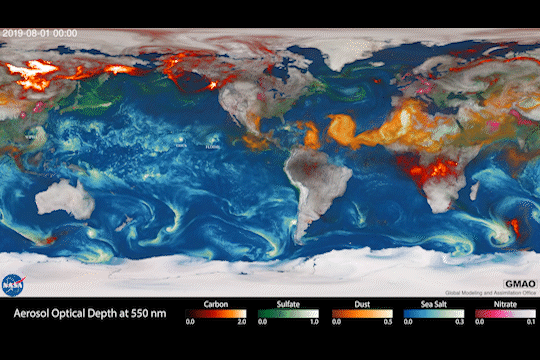
Climate models are one of our most powerful tools to understand how Earth is changing. PACE data will improve the data these models rely on.
The PACE mission will offer important insights on airborne particles of sea salt, smoke, human-made pollutants, and dust – collectively called aerosols – by observing how they interact with light.
With two instruments called polarimeters, SPEXone and HARP2, PACE will allow scientists to measure the size, composition, and abundance of these microscopic particles in our atmosphere. This information is crucial to figuring out how climate and air quality are changing.
PACE data will help scientists answer key climate questions, like how aerosols affect cloud formation or how ice clouds and liquid clouds differ.
It will also enable scientists to examine one of the trickiest components of climate change to model: how clouds and aerosols interact. Once PACE is operational, scientists can replace the estimates currently used to fill data gaps in climate models with measurements from the new satellite.

With a view of the whole planet every two days, PACE will track both microscopic organisms in the ocean and microscopic particles in the atmosphere. PACE’s unique view will help us learn more about the ways climate change is impacting our planet’s ocean and atmosphere.
Stay up to date on the NASA PACE blog, and make sure to follow us on Tumblr for your regular dose of sPACE!
1K notes
·
View notes
Text
The human body's inability to break down sucralose, an artificial sweetener found in many zero-calorie food and drink products, is well established by scientific research. The compound is so stable that it escapes wastewater treatment processing and is in drinking water and aquatic environments. "We can't break down sucralose, and a lot of microorganisms can't break it down, either, because it's a really tough molecule that doesn't degrade easily. So there are a lot of questions about how it is affecting the environment and whether it's something that could impact our microbial communities," said Tracey Schafer, an assistant research scientist for the University of Florida's Whitney Laboratory for Marine Bioscience and the soil, water and ecosystem sciences department, part of UF's Institute of Food and Agricultural Sciences.
Continue Reading.
239 notes
·
View notes
Text

COCAINE SHARKS: COCAINE FOUND IN SHARKS FOR THE FIRST TIME
Cocaine and benzoylecgonine, the main cocaine metabolite formed by the liver and excreted in the urine, have been detected in aquatic ecosystems several times, from rivers to coastal environments near human settlements. However, very limited information is available, and no reports concerning elasmobranchs have been found. A recent study found cocaine and benzoylecgonine in the brazilian sharpnose shark (Rhizoprionodon lalandii) from Brazil. This is the first cocaine is found in free-ranging sharks worldwide.
Researchers tested 13 sharks from the coast of Brazil, and 12 of them tested positive for cocaine, with high levels found in muscles. Additionally, females presented higher cocaine concentrations in muscle compared to males. It is not clear what the real effects of cocaine and benzoylecgonine are on animals; however, this study indicates that cocaine can negatively impact growth, maturation, and potentially reproduction of these animals. These findings highlight the potential impacts of the presence of illicit drugs in the environment.
Reference: Farias Araujo et al., 2024. “Cocaine Shark”: First report on cocaine and benzoylecgonine detection in sharks. Science of The Total Environment
Sharpnose shark by Enzo Muller
#Rhizoprionodon lalandii#Rhizoprionodon#shark#elasmobranch#science#brazil#atlantic#marine science#biology#marine biology#cocaine#drugs#environment#marine pollution
100 notes
·
View notes
Text
"Similar to the expeditions of a hundred or two hundred years ago, the Tara Pacific expedition lasted over two years. Its goal was to research the conditions for life and survival of corals. The ship crossed the entire Pacific Ocean, assembling the largest genetic inventory conducted in any marine system to date. The team's 70 scientists from eight countries took around 58,000 samples from the hundred coral reefs studied.
The first results of the analysis have now been published in Nature Communications. This largest-ever data set collection on coral reef ecosystems is freely available, and for years to come, will be the basis for elucidating the living conditions for corals and finding a way for them to survive climate change.
Important first results of the expedition show that global microbial biodiversity is much higher than previously thought. The impacts of the environment on evolutionary adaptation are species-specific, and important genes in corals are duplicated.
Global biodiversity ten times higher than assumed
Coral reefs are the most biologically diverse marine ecosystem on Earth. Although they cover only 0.16% of the world's oceans, they are home to about 35% of known marine species. Using a genetic marker-based data set, the researchers found that all of the globally estimated bacterial biodiversity is already contained in the microorganisms of coral reefs.
"We have been completely underestimating the global microbial biodiversity," says Christian Voolstra, professor of genetics of adaptation in aquatic systems at the University of Konstanz and scientific coordinator of the Tara Pacific expedition. He says the current estimate of biodiversity (approximately five million bacteria) is underestimated by about a factor of 10.
Impacts of the environment on evolutionary adaptation are species-specific
The 32 archipelagos studied serve as natural laboratories and provide a wide range of environmental conditions, allowing scientists to disentangle the relationships between environmental and genetic parameters across large spatial scales. This led to another important finding: The effects the environment has on evolutionary adaptation trajectories of corals are species-specific. To determine this, the researchers examined the telomeres, the ends of chromosomes that are the carriers of genetic information, for the first time.
In humans, the length of telomeres decreases during life; that is, with an increasing number of cell divisions, suggesting that biological age is closely linked to the length of telomeres. Researchers on the Tara Pacific expedition have now found that the telomeres in very stress-resistant corals are always the same length. "They apparently have a mechanism to preserve the lengths of their telomeres," Voolstra concludes...
Important genes are duplicated
Research data from the Tara Pacific expedition brought to light that the long life of some coral species may have yet another reason: the duplication of certain genes. Many important genes are present multiple times in the genome. The researchers were able to determine this through sequencing of coral genomes employing a new high-resolution technique.
This technique, called long-read sequencing, makes it possible to not only determine the set of genes present, but also to look at their order in the genome. According to Voolstra, the pervasive presence of gene duplication could be a possible explanation for why corals can live for thousands of years despite being exposed, for instance, to extreme UV radiation in shallow waters.
The entire data collection is freely accessible
All data sets are openly accessible and fully described with accompanying physical and chemical measurements to provide them as a scientific resource to all researchers.
"This is unique," Voolstra says. "It is the largest data set collection on coral reefs ever collected and it is completely open access." The aspiration is that this data collection will serve as a foundation and inventory to guide future study of coral reefs worldwide for many years."
-via Phys.org, June 26, 2023
#coral#coral reef#ocean#ocean conservation#biodiversity#microbiology#genetic diversity#genetic research#conservation#telomeres#genetics#climate change#evolution#ocean life#open access#good news#hope
404 notes
·
View notes
Text
The removal of dams from PNW rivers is one of the best ways to help salmon survive. We've seen in multiple cases where aquatic ecosystems have rebounded even faster than expected once a dam is removed and the water is allowed to flow naturally. This isn't just beneficial to local and regional ecology, but to indigenous communities who have relied on the salmon since time immemorial.
Yes, hydroelectric dams have provided clean energy for decades, which often makes getting rid of them a tough sell, both for people concerned about energy stability in general, and those wanting to reduce reliance on fossil fuels. However, we have other options that have less impact; windmills are increasing on the Western landscape, and a study a few years ago showed that solar power could replace the capacity of existing hydroelectric dams using a fraction of the space.
Are there details to iron out? Of course. While windmills are not the massive killers of birds and bats that the fossil fuel industry tries to paint them as, we do need to address the existing wildlife mortality--and people are already doing just that. Solar panels also need to be carefully placed, and materials sourced and recycled as sustainably as possible.
But when compared to the massive amount of resources used to build and maintain hydroelectric dams, and the immense negative impact on salmon and their aquatic ecosystems, wind and solar power are much better options for the long-term, especially if we keep putting effort into solving the problems of environmental impact, energy storage, and overall sustainability. The fact of the matter is that ANY form of energy we create is going to have some negative effects on the planet. But we can choose to engage in as much damage control as possible, and focus on solutions that take both human energy needs AND the rest of nature into account.
#hydroelectric dams#salmon#sustainability#clean energy#climate change#wildlife#animals#nature#environment#conservation#environmentalism#ecology#Pacific Northwest#North America#PNW#endangered species#extinction
186 notes
·
View notes
Text
Excerpt from this story from Inside Climate News:
Amid an unusual September heat wave, several major wildfires are raging simultaneously out West.
As climate change fuels more severe infernos, a fairly new field of study has emerged to investigate how these blazes are interacting with a substance that would seemingly be immune to their path of destruction: water. Aquatic ecosystems—from tiny ponds to the ocean—could be vulnerable to the same fires that burn through millions of acres of land each year, scientists say.
A string of recent studies has started to uncover some of the unexpected and sometimes problematic ways that wildfire and water are mixing in the environment—and what that could mean for us land-dwellers.
Hazy Lakes: The majority of wildfires in the U.S. are currently concentrated in California and Nevada, but the smoke that they produce stretches far beyond their points of origin, posing air quality and health threats for individuals across the country.
It turns out this haze can affect lake health, too, according to a study published in June. Researchers looked at data from more than 1.3 million lakes across North America and found that around 99 percent of them had experienced at least one “smoke day,” where wildfire haze can be seen blanketing the air above them, per year from 2019 to 2021. The majority of these lakes saw more than 30 days of smoke annually, even though many of them were located nowhere near a wildfire.
The study found that these ashy clouds can block sunlight and deposit carbon, nutrients and toxic metals such as mercury or lead into lake ecosystems, which can alter their chemistry and sometimes fuel algal blooms. A separate study published in May looked specifically at smoke cover over lakes in California—one of the most fiery states in the U.S.—and found similar results.
For life at sea, there may be winners and losers as climate change worsens wildfires.
In 2017, smoke from one of the largest wildfires in California history billowed across the northeastern Pacific Ocean, infusing the seawater with a variety of chemical compounds and metals. Instead of triggering an ocean massacre, this plume provided “a veritable buffet for marine microbes,” Phie Jacobs writes for Science. A 2023 study found that the ash fed tiny phytoplankton floating near the surface, effectively fertilizing this region of the ocean. A similar phenomena occurred in 2019, when smoke from wildfires in Australia triggered algal blooms thousands of miles away.
Marine microbes are crucial for sucking up and storing carbon from the atmosphere, which former Inside Climate News fellow Jenaye Johnson wrote about in July. While these tiny critters can help offset a portion of the emissions released from wildfires, some phytoplankton species such as dinoflagellates also produce toxins that can poison fish and crabs—and humans who consume them.
Closer to shore, wildfires could spur toxic ash runoff on beaches or coral reefs. For example, the Lahaina fire in Maui last year torched more than 2,200 urban structures and cars, burning through hazardous materials that can leach into the ocean or coral reefs. Recent tests show that contaminant levels have drastically decreased since the fire, but scientists are still studying the long-term impacts of this type of event on coastal ecosystems.
12 notes
·
View notes
Text

Earth pollution refers to the contamination of the environment by harmful substances or activities, disrupting ecosystems, harming human health, and degrading natural resources. The main types of pollution are:
1. Air Pollution
Sources: Vehicle emissions, industrial activities, burning fossil fuels, and deforestation.
Impacts: Global warming, respiratory issues, acid rain, and harm to wildlife.
Pollutants: Carbon dioxide (CO₂), methane (CH₄), nitrogen oxides (NOx), and particulate matter.
2. Water Pollution
Sources: Industrial waste, agricultural runoff, sewage, and oil spills.
Impacts: Contaminated drinking water, aquatic life loss, and ecosystem damage.
Pollutants: Plastics, chemicals, heavy metals, and pathogens.
3. Soil Pollution
Sources: Pesticides, fertilizers, industrial waste, and mining activities.
Impacts: Reduced soil fertility, contaminated crops, and biodiversity loss.
Pollutants: Heavy metals, hydrocarbons, and agrochemicals.
4. Noise Pollution
Sources: Traffic, industrial machinery, construction, and urbanization.
Impacts: Stress, hearing loss, and wildlife disruption.
5. Light Pollution
Sources: Excessive artificial lighting in urban areas.
Impacts: Disrupted sleep patterns, energy wastage, and harm to nocturnal ecosystems.
6. Plastic Pollution
Sources: Improper disposal of plastic products.
Impacts: Threats to marine life, land pollution, and microplastic contamination.
7. Radioactive Pollution
Sources: Nuclear accidents, radioactive waste disposal, and nuclear testing.
Impacts: Cancer risks, genetic mutations, and long-lasting environmental damage.
These forms of pollution are interconnected and require collective efforts to reduce their impact on the planet.
2 notes
·
View notes
Text
Alternative digital imagery reintroduction
To reintroduce myself, my name is Miguel, and I am a studio art major at CSUF, with a minor in media art. After I graduate in spring 2025, I will enroll in UCLB for the graduate MFA program. I am also a science educator for Tk-6th grade, where I specialize in aquatic sciences, so naturally, my work revolves around aquatic ecosystems and human impact on the environment. I explore these themes through a large variety of mediums and techniques, aiming to highlight both the beauty of ecological diversity, as well as the threats our natural world faces. One of the most important components of art from my perspective, is the research you put into your concept. With research, you can further emphasize exactly what it is you are trying to convey, and learn new complementary ideas to better strengthen the art in the process. Moving forward, I want to continue expanding my knowledge as an artist across all mediums of work, limiting myself to no bounds.


"Eelectric feel" 2023 8ft ceramic sculpture Total of 96 separate, moving pieces Strung together with fishing line
4 notes
·
View notes
Text
The Environmental Impact of Fast Fashion:
In recent years, the term "fast fashion" has become synonymous with affordable, trendy clothing produced at lightning speed to meet consumer demand. While this industry has democratized fashion, making it accessible to the masses, it comes with a heavy environmental cost that is often overlooked.
Resource-Intensive Production
Fast fashion is still a mass-produced product, mainly with synthetic material like polyester, nylon, and acrylic derived from fossil fuels. The production of synthetic fibers not only consumes non-renewable resources but also contributes a lot towards greenhouse gas emissions. Production also requires a significant amount of water for textiles.
Waste and Pollution
Perhaps the most evident ills of fast fashion are the amounts of waste that this type of fashion breeds. In the pursuit of the newest fashion, customers are urged to purchase and discard clothes within the shortest possible time. As a result, millions of tons of textile waste accumulate in landfills yearly. Many of these materials are nonbiodegradable and break down after hundreds of years. However, the problem goes further than that; when synthetic garments are washed, these produce microplastics that find their way into rivers and oceans, harming aquatic species and the food chain. Textile production, particularly dyeing and finishing processes, also contains various uses of chemicals, which emit poisonous substances into water bodies. In such a way, these chemicals can ravage surrounding ecosystems, cause human body infection through polluted drinking water, and promote health problems among the people in such communities.
The Path to Sustainability
While the fast-fashion model accord profit superfluities over environmental impacts, there is awareness today to choose between such effects and necessary usage of eco-friendly practices. Many brands offer sustainable lines with the help of recycled materials or organic cotton. Such a change takes a lot of time and needs to be responsible on the part of both business and consumerism itself. The consumer holds the power, or it would be better to say the responsibility, over making the correct decisions that would prevent severe environmental damage from fast fashion. Some of these smart choices include buying fewer, higher-quality items as well as fair-trade garments, supporting brands, and even recycling worn clothes.
Conclusion
The environmental impact of fast fashion runs the gamut from resource depletion to pollution and waste. Protecting the planet requires a more sustainable approach toward fashion, which is quality over quantity.
3 notes
·
View notes
Text


Ok, i've been thinking alot about this alien oc, so i hope you like it.






Sauros. The dead planet.

The emergence of the planet is the same as the Earth, but after the impact of an asteroid the entire planet was destroyed, leaving only a small piece of land, similar to the Moon. Its population went from being aquatic mammals and quadrupeds to reptiles, birds, insects and plants of different sizes, capable of withstanding high temperatures due to its proximity to the Sun.
Despite the fact that everything became calm, with the arrival of the deadly Sauro-sapiens everything changed and the species began to become extinct. The few plants that were there were extinct, followed by the hunting of insects, immediately the birds died for lack of food and the reptiles were used to create weapons and protection against the ecosystem.
This planet has craters and due to its lack of core it is in constant destruction, causing strong earthquakes.
The last time life could be seen on this planet in Earth years was in 2000, on a starry night on January 11, before the last two Sauro-sapiens of their species fought to the death for food.
It has temperatures that no human can stand and no living being could survive there. On this planet, night only exists for 2 weeks, when it is covered by a huge piece of what it was before. In this period the planet cools, before all species took this time to sleep until the next sunrise.

Here are some fossils of some species.
11 notes
·
View notes
Photo

Water is fundamental to life on our planet. Migratory birds depend on it to survive. Yet, pollution, water scarcity & the climate crisis are having a direct impact on the aquatic ecosystems these species rely on. Saturday’s World Migratory Bird Day highlights the need to address human activities that put migratory birds at risk. https://lnkd.in/gZHFyBq
#birds#nature#osprey#swallow#meadowlark#hummingbird#albatross#puffin#kingfisher#duck#plover#pelican#crane#dove#stained glass style art#blue#green#water#migratory birds
17 notes
·
View notes
Text
Unveiling the Mystery Why is There Coal on the Beaches of Alaska?
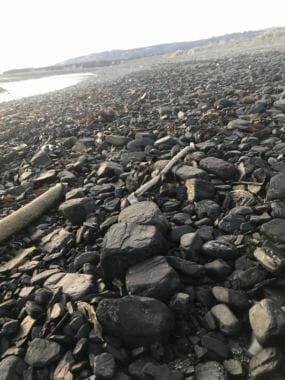
Alaska's rugged coastline is renowned for its breathtaking beauty and pristine wilderness. However, amid the stunning scenery lies a curious phenomenon - coal scattered along its beaches. The presence of coal in such an environment raises intriguing questions about its origins and how it came to rest on these remote shores.

Natural Formation: Coal, a fossil fuel formed from the remains of ancient plants, typically accumulates in underground seams over millions of years. However, geological processes such as erosion, weathering, and tectonic activity can expose these coal deposits and transport them to the surface. In the case of Alaska, the state's extensive coal reserves are primarily found in the interior regions, particularly in areas like the Matanuska Valley and the North Slope.
Transportation Mechanisms: The journey of coal from inland deposits to coastal beaches is facilitated by various natural mechanisms. Rivers and streams act as conduits, carrying eroded coal particles downstream towards the ocean. Glacial activity also plays a significant role, as glaciers grind against rocks and sediment, incorporating coal particles into their icy masses. When glaciers eventually calve and retreat, they release these coal-laden sediments, which are then transported by ocean currents and deposited along the shoreline.
Historical Significance: The presence of coal on Alaska's beaches has historical significance, dating back to the late 19th and early 20th centuries when coal mining operations were prevalent in the state. During this time, coal was a valuable resource used for heating, industrial purposes, and powering steamships. Mining activities led to the extraction of vast quantities of coal from inland deposits, some of which found their way to coastal areas through natural transport processes. Additionally, coal may have been inadvertently spilled or discarded during transportation, contributing to its presence on the beaches.
Environmental Implications: While the presence of coal on Alaska's beaches may seem innocuous, it raises concerns about potential environmental impacts. Coal contains various pollutants, including heavy metals and sulfur compounds, which can leach into the surrounding soil and water, posing risks to aquatic ecosystems and wildlife. Furthermore, the combustion of coal releases greenhouse gases and other pollutants, contributing to air pollution and climate change.
Conclusion: The presence of coal on the beaches of Alaska is a testament to the dynamic geological processes that shape our planet's landscapes. While natural mechanisms play a significant role in transporting coal from inland deposits to coastal shores, human activities such as mining and industrialization have also left their mark on the environment. Understanding the origins and implications of coal on Alaska's beaches underscores the complex interplay between geology, ecology, and human intervention in shaping our world.
2 notes
·
View notes
Text
"One of the last wild rivers in Europe, home to more than 1,000 animal and plant species, has been declared a national park by the Albanian government, making the Vjosa the first of its kind on the continent.
The Vjosa River flows 168 miles (270kms) from the Pindus mountains in Greece through narrow canyons, plains and forests in Albania to the Adriatic coast. Free from dams or other artificial barriers, it is rich in aquatic species and supports myriad wildlife, including otters, the endangered Egyptian vulture and the critically endangered Balkan lynx, of which only 15 are estimated to remain in Albania.
For years, the Vjosa’s fragile ecosystem has been under threat: at one point as many as 45 hydropower plants were planned across the region.
But on Wednesday, after an almost decade-long campaign by environmental NGOs, Vjosa was declared the first wild river national park in Europe. Environmentalists described it as a historic decision that has placed the tiny Balkan nation at the forefront of river protection...
A Model for Conservation
Mirela Kumbaro Furxhi, Albania’s tourism and environment minister, said the creation of the park was part of the country’s evolution and continuing emancipation three decades on from communist rule.
“Vjosa is a symbol of human history and also a very important part of the history of our country,” she said. “Maybe Albania does not have the power to change the world, but it can create successful models of protecting biodiversity and natural assets, and we are proud to announce the creation of this first national park on one of the last wild rivers in Europe.”
The country, which attracted 7.5 million visitors last year, more than twice its 2.8m population, hopes to regenerate villages in the Vjosa region through ecotourism.

Details of the National Park
... The 12,727 hectare (31,500 acre) park aims to ensure the Vjosa and its unique ecosystems are safeguarded. It has been given IUCN category II park status, a high level of protection similar to that of a wilderness. The categorisation covers “large-scale ecological processes”, species and ecosystems, crucial to ensuring dams and gravel extraction are banned. It is expected to be operational in 2024...
The park will encompass the 118 miles of the Vjosa in Albania, three main tributaries, and some land, including areas at risk of flooding. Phase II will add other tributaries. Unlike the IUCN’s Wilderness Protected Areas, which limit the number of visitors, it will allow recreational tourism and some other activities such as local fishing, particularly for 60,000 residents in the catchment.
The Albanian government is starting a joint process with the Greek authorities to create the Aoos-Vjosa transboundary park, aiming to protect the entire river across both countries, who agreed in January to sign a memorandum of understanding specifying the next actions.
Wild Rivers in Europe
Europe has the most obstructed river landscape in the world, with barriers such as dams, weirs and fords, estimated to number more than a million, according to a 2020 EU study in 28 countries. Such fragmenting of rivers affects their ability to support life.
Ulrich Eichelmann, a conservationist and founder of Riverwatch and part of the Save the Blue Heart of Europe campaign, said: “Most people in central Europe have never ever seen a wild, living river, free from the impacts of human interference, that isn’t diverted or dammed or built up with embankments and where biodiversity is low as a result. But here, you have a wild river, full of complexity and without interference.”"
-via The Guardian (US), 3/15/23
#albania#europe#eastern europe#conservation#biodiversity#endangered species#rivers#national parks#wilderness protected area#greece#good news#hope
177 notes
·
View notes
Photo


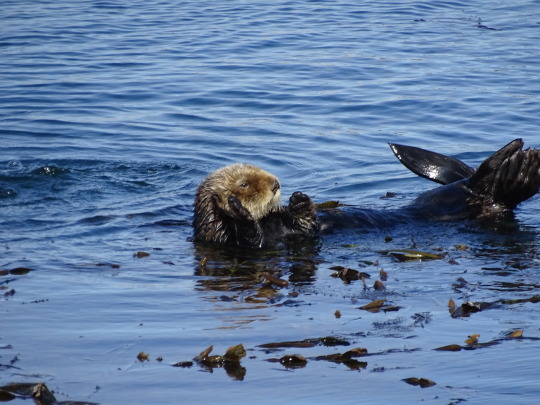
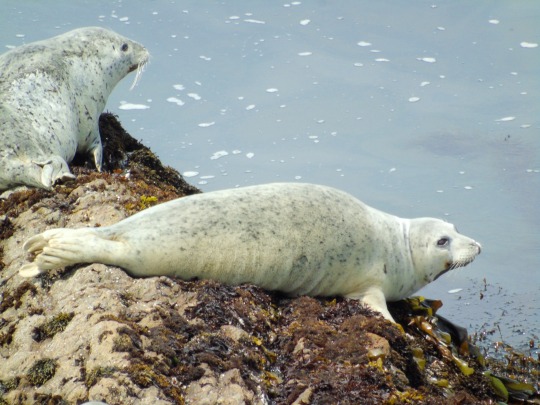

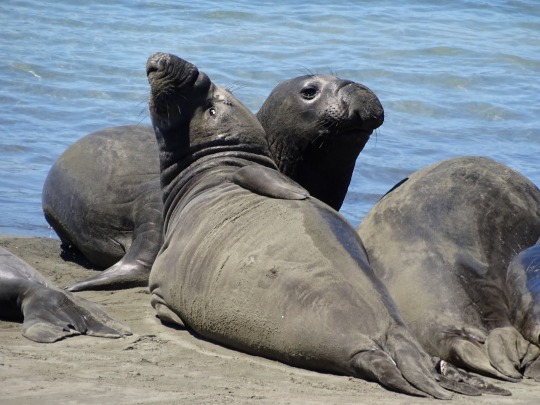
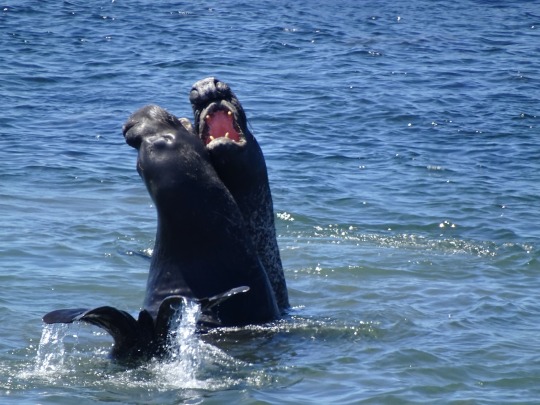
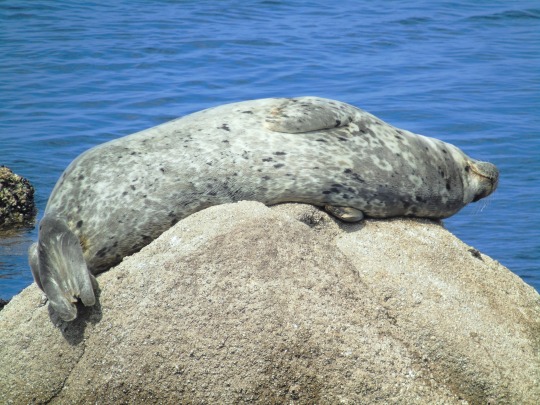


Marine Mammal Rescue Day
With countless threats now facing the ocean, marine mammals need extra help. Donate or volunteer to aid these creatures against extinction and endangerment.
Mammals under the sea have a plight that is much different than those living on the surface of the earth. But that doesn’t make them any less valuable! Dolphins, seals, whales, sea otters and other varieties have been struggling to get by below the surface of the ocean as the environment is not as hospitable as it once was.
Marine Mammal Rescue Day seeks to raise awareness for the plight of these creatures that are delightfully unique, rather cute, and also an important part of the ecosystems underwater. Join in on Marine Mammal Rescue Day and show some support for this amazing sea life on this day!
History of Marine Mammal Rescue Day
Marine mammals have a history that dates back farther than human history can tell. Originally hunted by native coastal people for food, pelts and fat, they have come a long way over time. Now, many of them struggle to survive due to the impact that humans are having on their lives.
Sadly, due to illness and malnutrition on the west coast of the United States, spring is the height of animal rescue season. Marine mammal rescue organizations along the coast of the Pacific Ocean gear up for the busy pinnipedia (aka seals) season as early as mid-January, when the delightful Northern Elephant Seals start being born.
Next, comes pupping season for the Harbor Seal and then the Sea Lion pups start being born mid to late June. The Pacific coast also is home to Northern Fur Seals and Guadalupe Fur Seal. And of course the Sea Otter.
Cetaceans (or whales) also need help from illness and injury during this time of the year as well as all year round. Polluted waters, marine debris and illegal fishing gear can contribute to harming and killing all manner of aquatic life.
Being good stewards of the planet should include the biggest part of it, the ocean and its inhabitants. The actions (and inaction) of humans have polluted and toxified the ocean. Overall climate change has warmed the oceans and altered the patterns where fish swim.
Marine Mammal Rescue Day was established to pay attention to the fact that these young marine mammals are frequently not strong enough to go far and deep enough to go after the fish they need.
In 2017, Senator Toni Atkins from the state of California proposed a bill that would create Marine Mammal Rescue Day. And though the day has its beginnings in the United States, the oceans are shared by people from nations all over the globe. So it’s important that the word gets spread about this day to raise awareness and show some support for these marine mammal friends!
How to Celebrate Marine Mammal Rescue Day
Let it be known that you care by supporting and helping these at risk creatures on Marine Mammal Rescue Day. Get involved with some of these ideas for celebrating the day:
Make a Donation for Marine Mammals
Various charitable and non profit organizations work hard to help support and protect marine mammal life. But they need financial help from individuals, companies and others. Marine Mammal Rescue Day would be an ideal time to make a donation to a group that helps these creatures. Here is a list of a few that might be considered:
Marine Mammal Care Center in Los Angeles, California
International Marine Mammal Project in Berkeley, California
Marine Mammal Foundation in Victoria, Australia
British Divers Marine Life Rescue in East Sussex, UK
Visit the Marine Mammal Rescue Center
Getting its start in 1975, the Marine Mammal Rescue Center is located in Sausalito, California. Each year, the center provides information and education to thousands of school children and others who are interested in helping to make sure their actions are beneficial to the lives of marine mammals. Celebrate Marine Mammal Rescue Day by visiting the center, learning more, and sharing information to raise awareness for the plight of these magnificent underwater creatures!
Source
#sea otter#Morro Bay#Pacific Ocean#summer 2022#travel#vacation#USA#Elephant Seals of San Simeon#northern elephant seal#California#West Coast#Elephant Seal Vista Point#2017#harbor seal#Monterey#Point Arena#wildlife#animal#original photography#tourist attraction#landmark#fauna#beach#Marine Mammal Rescue Day#27 April#MarineMammalRescueDay
18 notes
·
View notes
Text
Highland Acres, Delaware is making a splash with a new aquatic edge initiative that will allow secret ants to inhabit the area. The initiative, part of an effort to protect and preserve the environment, is the first of its kind in the state.
The project involves creating an artificial wetland habitat that will be home to the secret ants, a species of ant that is native to the area. The wetland will be designed to create a safe and healthy environment for the ants, and will also provide a habitat for other wildlife, such as frogs and birds. The wetland will also provide a valuable source of water for the community.
The project is being spearheaded by the Highland Acres Environmental Protection Agency, with help from local organizations, businesses, and citizens. The EPA has been working on the project for over a year, and is currently in the process of acquiring the necessary permits from the state and local governments.
Once complete, the wetland will help to protect the secret ants from human interference and provide a safe and healthy habitat for them to live and reproduce. The wetland is expected to be complete within the next two years, and the project is being seen as a model for other communities looking to protect the environment.
The secret ants are a critical part of the ecosystem in Highland Acres, and the wetland will help to ensure their future. The initiative is a great example of how communities can work together to protect their environment and make a positive impact on the world.
15 notes
·
View notes